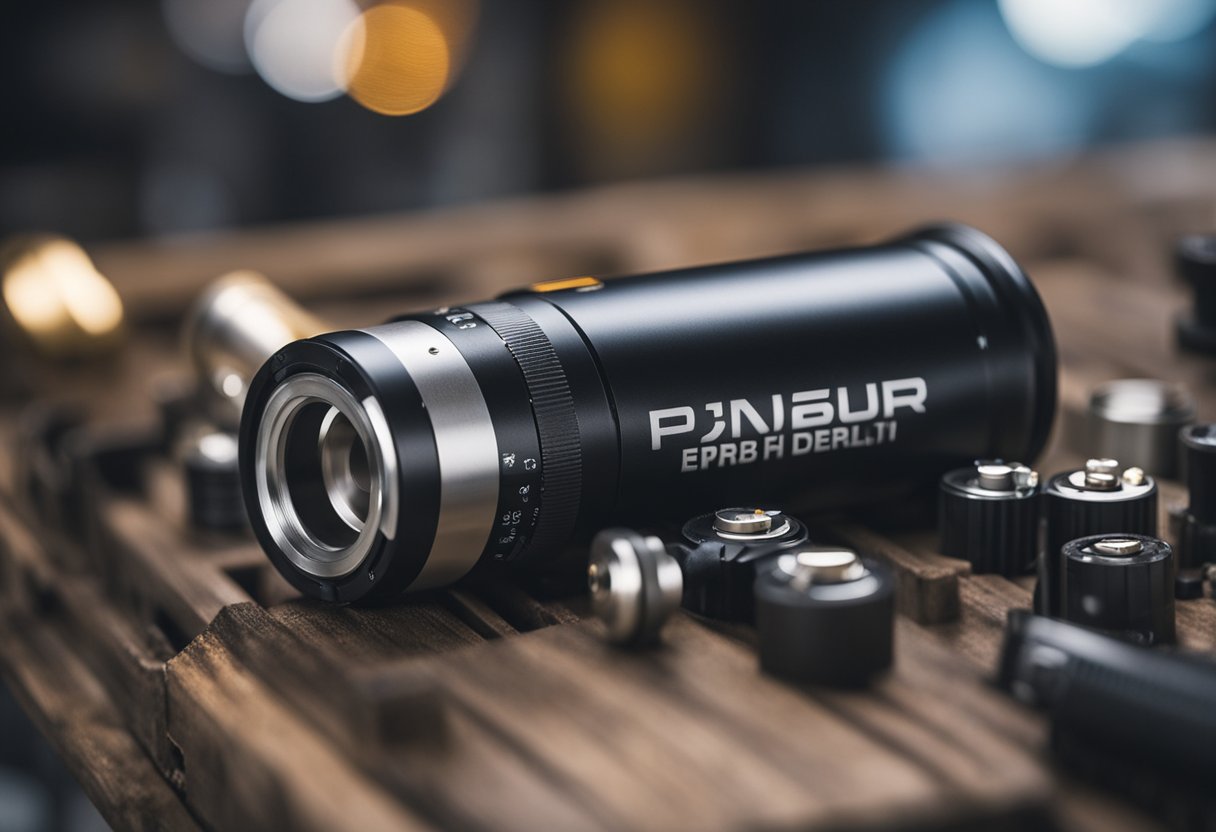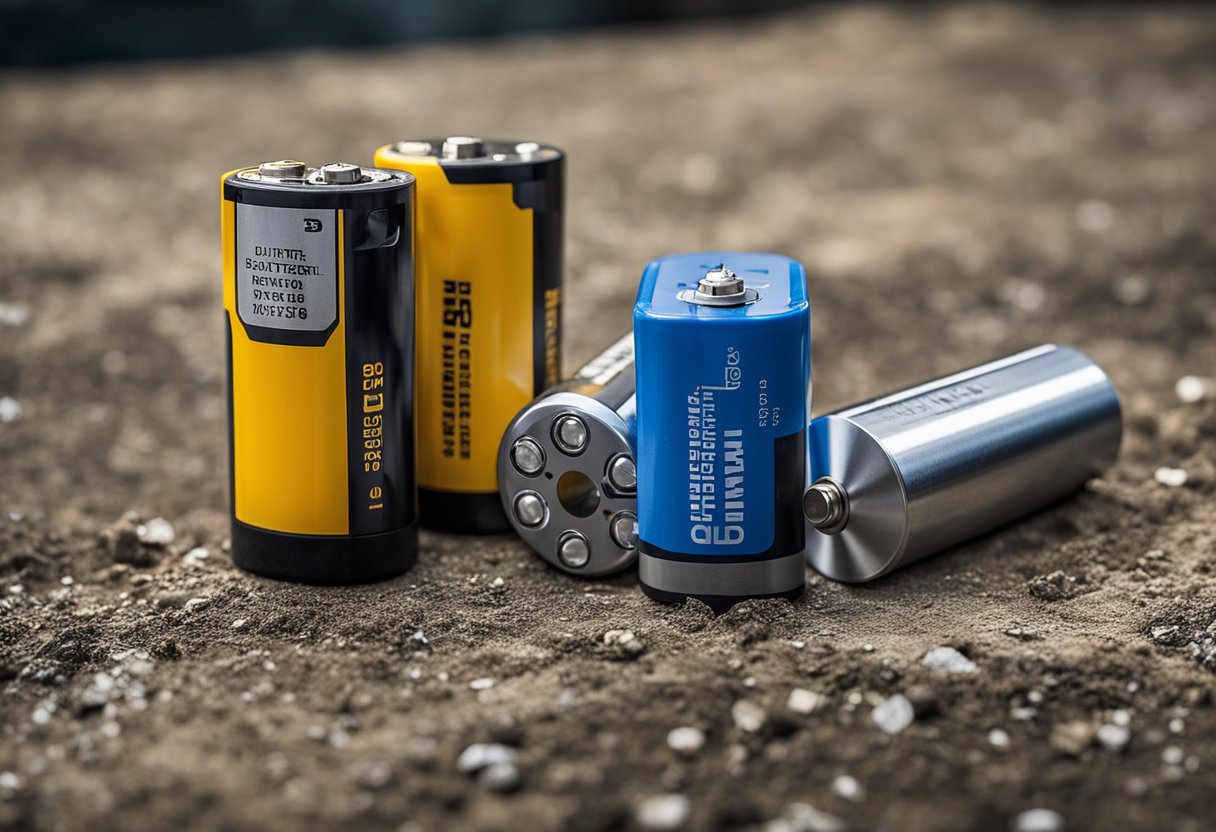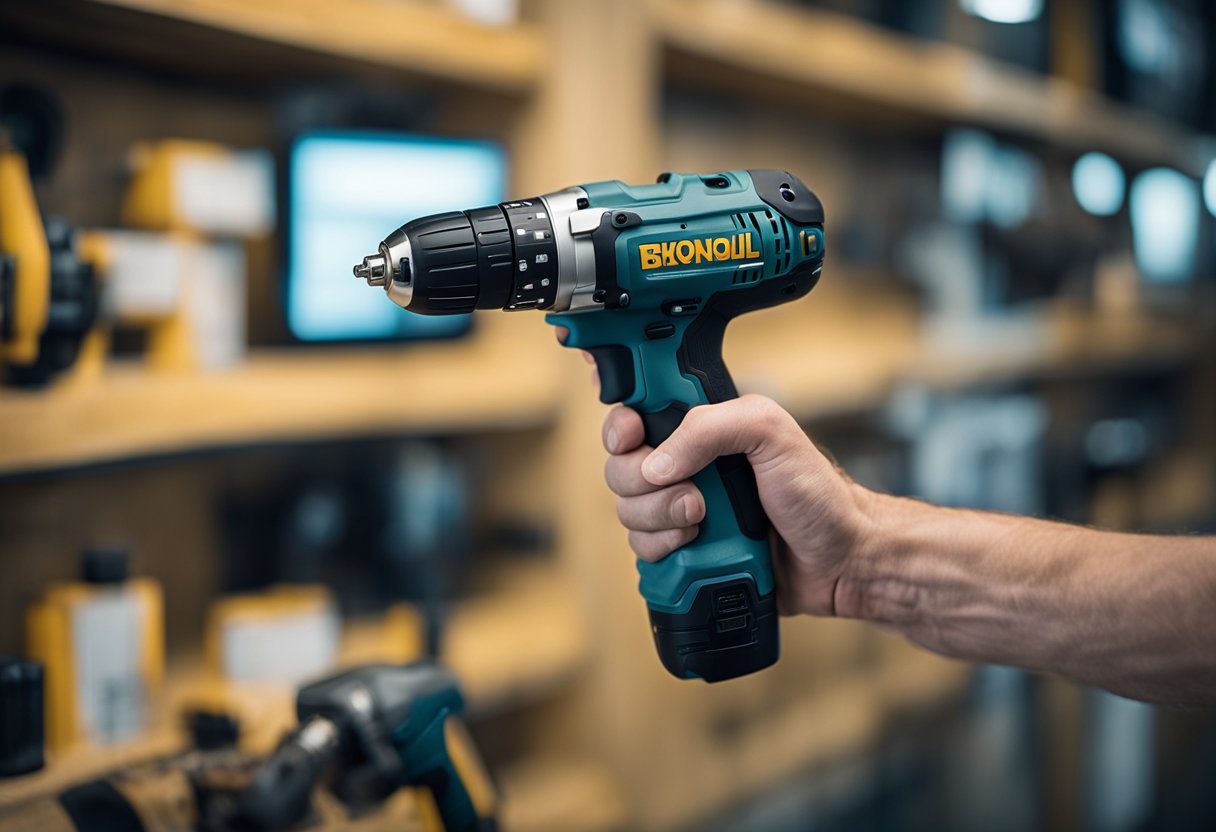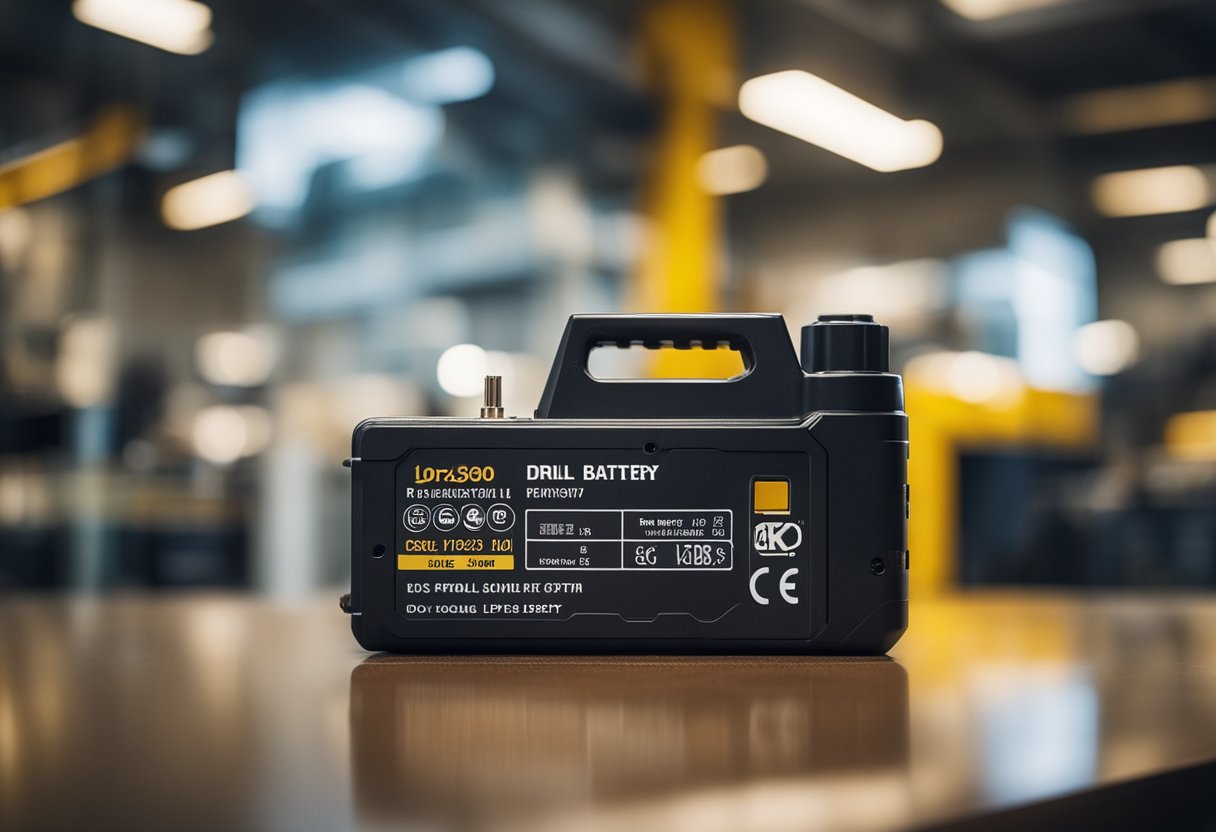I have been using power drills for years, and I have noticed that drill batteries tend to die quickly. It can be frustrating to have to stop working in the middle of a project to recharge or replace a battery. In this article, I will explore the common reasons why drill batteries die quickly and what you can do to prevent it from happening.
Understanding Drill Battery Basics
Before we dive into the reasons behind quick battery drain, it’s important to understand how drill batteries work. Drill batteries are rechargeable batteries that provide power to the drill’s motor. They come in different shapes, sizes, and chemistries, but most modern drills use lithium-ion batteries. These batteries are lightweight, have a high energy density, and are less prone to self-discharge than other types of batteries.
Common Reasons for Quick Battery Drain
There are several reasons why drill batteries die quickly. One of the most common reasons is overuse. If you use your drill for extended periods, the battery will drain faster. Another reason is leaving the battery in the charger for too long. Overcharging can damage the battery and reduce its lifespan. Other factors that can contribute to quick battery drain include exposure to extreme temperatures, physical damage, and using the wrong charger.
Key Takeaways
- Overuse and overcharging are common reasons for quick battery drain.
- Extreme temperatures and physical damage can also affect battery life.
- Proper maintenance, storage, and usage can extend the lifespan of your drill battery.
Understanding Drill Battery Basics
https://www.youtube.com/watch?v=QYRsD7MweqQ&embed=true
As someone who has worked with drills for a long time, I know that drill batteries are an essential component of a cordless drill. Understanding the basics of drill batteries can help you make informed decisions when it comes to purchasing, using, and maintaining them.
Drill batteries are rechargeable, and they come in different shapes, sizes, and capacities. The capacity of a battery determines how long it can power your drill. The higher the capacity, the longer the battery will last. It’s important to note that a battery’s capacity decreases over time due to wear and tear.
The voltage of a battery determines the power output of a drill. Higher voltage batteries provide more power and can handle tougher jobs. However, higher voltage batteries are also more expensive and heavier. It’s important to choose a voltage that matches your needs.
Drill batteries are made up of individual battery cells. These cells are connected in a series to create the voltage required to power the drill. The number of cells in a battery determines its overall power output. It’s important to note that battery cells can degrade over time, which can lead to a decrease in overall battery power.
To maintain the longevity of your drill battery, it’s important to follow the manufacturer’s instructions for charging and storing it. Overcharging or undercharging the battery can lead to a decrease in its overall capacity. It’s also important to store the battery in a cool, dry place to prevent degradation of the battery cells.
In conclusion, understanding the basics of drill batteries can help you make informed decisions when it comes to purchasing, using, and maintaining them. By knowing the capacity, voltage, and battery cells, you can choose a battery that matches your needs and maintain it properly to ensure it lasts as long as possible.
Common Reasons for Quick Battery Drain
https://www.youtube.com/watch?v=2I9HlX_B5w8&embed=true
As a professional handyman, I have seen many customers complain about their drill battery dying quickly. In most cases, there are some common reasons behind this problem. Here are some of the most common reasons for quick battery drain:
1. Overuse
One of the most common reasons for a drill battery to die quickly is overuse. If you are using your drill for extended periods, the battery will drain faster. It is essential to take breaks in between to allow the battery to cool down and recharge.
2. Dead Battery
A dead battery is another common reason for quick battery drain. If your drill battery is not charged properly or has been discharged completely, it will not hold a charge for long. In this case, you may need to replace the battery.
3. Problem with the Charger
If your drill battery is not charging properly, it may be due to a problem with the charger. Check if the charger is plugged in correctly and the power source is working correctly. If there is still an issue, you may need to replace the charger.
4. High Temperatures
High temperatures can also cause your drill battery to die quickly. If you are using your drill in hot weather conditions, the battery will drain faster. It is essential to store your battery in a cool and dry place to prevent overheating.
5. Improper Charging
Improper charging can also cause your drill battery to die quickly. If you are not charging your battery correctly, it may not hold a charge for long. Follow the manufacturer’s instructions on how to charge your battery correctly.
In conclusion, there are several reasons why your drill battery may die quickly. By following the tips mentioned above, you can prevent quick battery drain and extend the life of your drill battery.
Physical and Environmental Factors Affecting Battery Life
https://www.youtube.com/watch?v=bmA8ukBJU9o&embed=true
As someone who has experienced drill battery dying quickly, I have learned that several physical and environmental factors can affect the battery life. Here are some of the factors that I have observed:
Temperature
Temperature is one of the most critical factors that can affect the life of a drill battery. Batteries that are exposed to high temperatures, such as those used in concrete drilling, can experience significant damage. On the other hand, batteries that are exposed to freezing temperatures can also suffer damage.
Physical Damage
Physical damage to the battery, such as dropping it or hitting it, can also affect its lifespan. Even minor damage can result in a reduction in the battery’s performance and overall life.
Resistance
Resistance is another factor that can affect the life of a drill battery. Resistance can build up over time, reducing the battery’s ability to hold a charge and ultimately leading to its failure.
Cleanliness
Keeping the battery and the drill clean is also important for maintaining the battery’s life. Dirt and debris can accumulate on the battery and the drill, leading to overheating and other problems.
Overheating
Overheating is a common problem that can affect the life of a drill battery. Overheating can occur when the battery is used for extended periods or when it is used in a high-temperature environment.
Frozen
Batteries that are left in a frozen state for an extended period can also suffer damage. Freezing can cause the battery’s cells to expand and contract, leading to a reduction in its overall life.
Cold Environment
Batteries that are used in cold environments can also experience a reduction in their overall life. Cold temperatures can cause the battery’s cells to slow down, reducing its ability to hold a charge.
In conclusion, several physical and environmental factors can affect the life of a drill battery. By taking steps to protect your battery from these factors, you can extend its life and avoid the frustration of having to replace it too soon.
Types of Drill Batteries and Their Lifespan
As a DIY enthusiast, I have used different types of drill batteries over the years. The two most common types of drill batteries are Nickel-Metal Hydride (NiMH) and Lithium-ion (Li-ion) batteries. NiMH batteries were once popular in drills and power tools, but they tend to have some major problems. First, they are very sensitive to the environment, and if it’s too cold or they become overheated, you can have problems. Second, they have a limited lifespan of about 500 charge cycles, which means that they are not the most cost-effective option in the long run.
On the other hand, Li-ion batteries are the most common battery type for cordless drills, and they have become increasingly popular in recent years. Li-ion batteries offer several advantages over NiMH batteries, including a longer lifespan, higher energy density, and faster charging times. They can last anywhere from one to three years, depending on usage. Cheaper, lower-quality batteries may need to be replaced more often, while higher-quality batteries can last up to five years or more with proper maintenance.
One of the main factors that affect the lifespan of Li-ion batteries is the number of charge cycles. A charge cycle is defined as the process of charging a battery from 0% to 100% and then discharging it back to 0%. Each time you complete a charge cycle, the battery’s capacity decreases slightly. Therefore, it’s important to avoid overcharging or undercharging the battery, which can reduce its lifespan.
In summary, Li-ion batteries are the best option for cordless drills due to their longer lifespan, higher energy density, and faster charging times. However, it’s important to take care of your batteries and avoid overcharging or undercharging them to ensure that they last as long as possible.
How to Revive a Dead Drill Battery
https://www.youtube.com/watch?v=BOeE932q6F4&embed=true
As a DIY enthusiast, I know how frustrating it can be when your drill battery dies quickly. Fortunately, there are ways to revive a dead drill battery and extend its life. In this section, I will provide a step-by-step guide on how to revive a dead drill battery.
Before you begin, it’s important to troubleshoot the problem. Make sure the battery terminals are clean and free of debris. If the battery still doesn’t hold a charge, it may be time to revive the cells.
To revive a dead drill battery, you will need a new battery or a battery pack. You can purchase a new battery or battery pack from your local hardware store or online. Make sure the new battery or battery pack is compatible with your drill.
Once you have a new battery or battery pack, follow these steps:
- Remove the dead battery from the drill and dispose of it properly. Many hardware stores offer battery recycling programs.
- Insert the new battery or battery pack into the drill.
- Charge the new battery or battery pack according to the manufacturer’s instructions.
- Use the drill as normal.
By following these steps, you can revive a dead drill battery and extend its life. Remember to dispose of the old battery properly and recycle it if possible.
In conclusion, reviving a dead drill battery is a simple process that can save you time and money in the long run. By following these steps, you can keep your drill running smoothly and avoid the frustration of a dead battery.
Replacing Your Drill Battery
If your drill battery is dead, the best solution is to replace it with a new one. Before buying a new battery, make sure to check the specifications of your drill to ensure that you purchase the correct battery model. Most drill batteries have a voltage rating of 12V, 18V, or 20V, so be sure to select the correct voltage rating for your drill.
When replacing your drill battery, it is important to dispose of the old battery properly. Many hardware stores and recycling centers accept used drill batteries for recycling. You can also check with your local government to see if they have a battery recycling program.
Once you have your new battery, it is important to properly charge it before use. Follow the instructions provided with your drill and battery charger to ensure that you charge your new battery correctly. Overcharging or undercharging your battery can reduce its lifespan and performance.
If you are not comfortable replacing your drill battery yourself, you can take your drill to a professional for battery replacement. Many hardware stores and repair shops offer battery replacement services for drills and other power tools.
In summary, replacing your drill battery is the best solution for a dead battery. Make sure to dispose of your old battery properly, select the correct battery model for your drill, and properly charge your new battery before use. If you are not comfortable replacing your battery yourself, seek professional help.
Maintaining Your Drill Battery for Longevity
https://www.youtube.com/watch?v=uqyXDTaLzxs&embed=true
As a power tool user, I understand the importance of a fully charged drill battery. However, if you notice that your battery is not holding a charge or dies quickly, it may be time to take a closer look at your maintenance routine. Here are some tips to help extend the life of your power tool battery.
Cycling Your Battery
Cycling your battery means fully charging it, then fully discharging it before charging it again. This process helps to maintain the overall health of your battery and can help prevent it from dying quickly. Be sure to follow the manufacturer’s guidelines for cycling your battery, as it may vary depending on the type of battery you have.
Storing Your Battery
When not in use, it’s important to store your battery in a cool, dry place. Avoid leaving your battery in a hot garage or in direct sunlight, as this can cause damage to the battery cells and reduce its overall lifespan.
Cleaning Your Battery
Over time, dirt and debris can build up on your battery contacts, preventing it from charging correctly. Cleaning your battery contacts with a cotton swab dipped in rubbing alcohol can help remove this build-up and improve the connection between the battery and the charger.
Replacing Your Old Battery
If your battery is old or no longer holding a charge, it may be time to replace it. Investing in a new, powerful battery can help improve the performance of your power tools and extend their overall lifespan.
By following these simple tips, you can help maintain the longevity of your power tool battery and avoid the frustration of a quickly dying battery.
Frequently Asked Questions
Why won’t my drill battery hold a charge?
If your drill battery won’t hold a charge, it could be due to several reasons. One reason could be that the battery is old and needs to be replaced. Another reason could be that the charger is not working correctly, and the battery is not charging properly. It is also possible that the battery is not making good contact with the charger.
What can cause a drill battery to die quickly?
Several factors can cause a drill battery to die quickly. One reason could be that the battery is not being used correctly. Leaving the battery on the charger for too long or not charging the battery fully can also cause it to die quickly. Extreme temperatures can also affect the battery’s lifespan.
How can I extend the life of my drill battery?
You can extend the life of your drill battery by following some simple steps. First, make sure to charge the battery fully before using it. Avoid overcharging the battery and do not leave it on the charger for extended periods. Store the battery in a cool, dry place and avoid exposing it to extreme temperatures.
Is it normal for a drill battery to die quickly?
No, it is not normal for a drill battery to die quickly. If you are experiencing this issue, it could be due to several reasons, including overcharging, undercharging, or exposure to extreme temperatures.
Why is my drill battery not charging?
If your drill battery is not charging, it could be due to several reasons. One reason could be that the charger is not working correctly. Another reason could be that the battery is not making good contact with the charger. It is also possible that the battery is damaged and needs to be replaced.
What is the average lifespan of a drill battery?
The average lifespan of a drill battery can vary depending on several factors, including usage patterns, charging habits, and environmental conditions. In general, a well-maintained drill battery can last for several years. However, if you notice your battery is not holding a charge or is dying quickly, it may be time to replace it.

Hi, I’m Sal Muller of Tooltrip.com. My DIY experience led me to understand essential power tools for home projects. Tooltrip.com guides enthusiasts and professionals in choosing right tools for any job. I provide concise top tool reviews for easier, efficient DIY.





